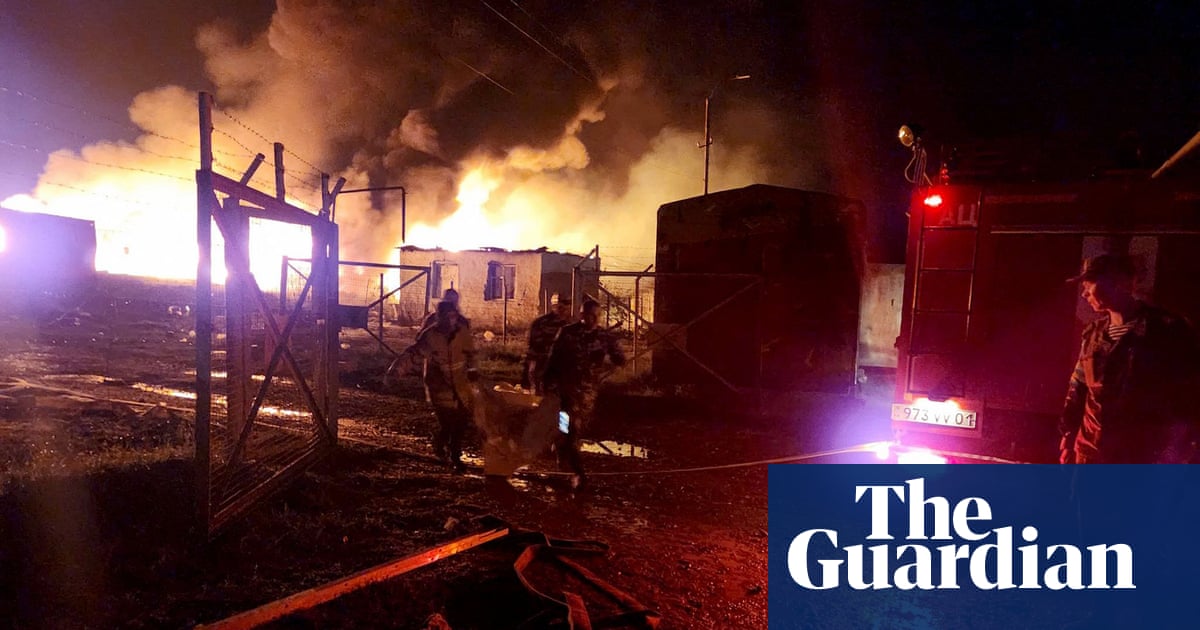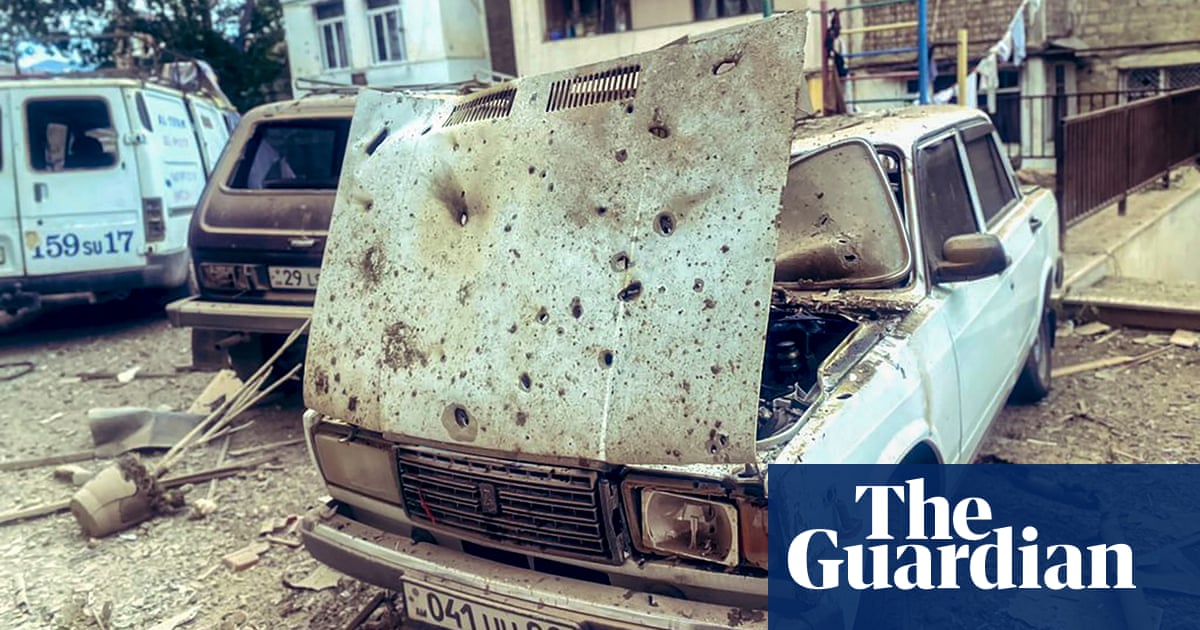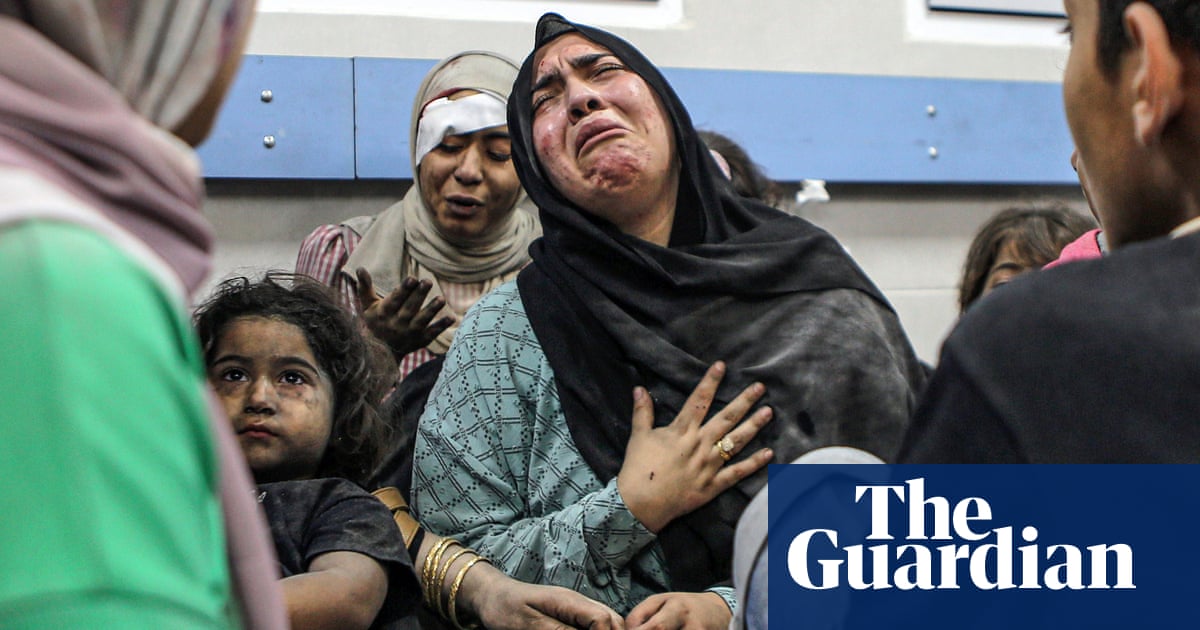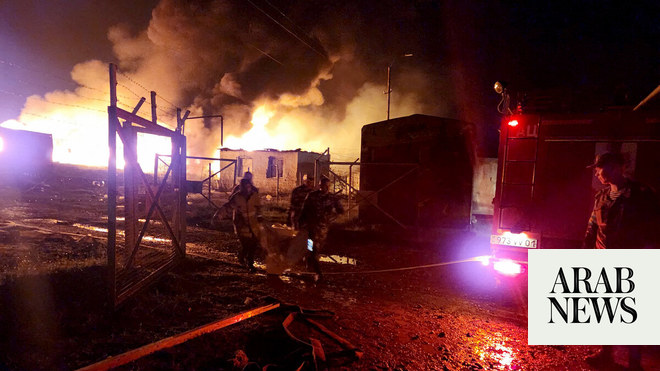
Dozens of people are feared dead and hundreds more injured after a powerful explosion at a fuel storage depot in the Nagorno-Karabakh region, as thousands of ethnic Armenians streamed out of the breakaway territory after the Azerbaijani military reclaimed full control of it in a lightning offensive last week.
Most of those wounded were in a “severe or extremely severe” condition after the blast at the facility near the regional capital of Stepanakert on Monday evening, according to the Armenian health ministry. The death toll from the blast is expected to rise significantly, with more than 100 still listed as missing.
Armenian authorities also said 125 bodies had been brought from Nagorno-Karabakh for identification, but it was not immediately clear how many of these people died in the fuel explosion and how many were killed in fighting last week.
The cause of the blast, which happened as residents were lining up to get fuel for their cars in order to leave the region, remains unknown.
Medical centres in Stepanakert were at capacity on Tuesday evening, with staff calling for an airlift to Armenia of critically injured patients.
“At this moment we do not have any medical resources left,” a hospital official told Siranush Sargsyan, a Stepanakert-based freelance journalist, adding that they were out of anti-burn antibiotics. “We have a very high number of burn patients … We need to urgently evacuate our patients to specialised burn units in Yerevan.”
Armenian officials said they had dispatched a team of doctors on a medical helicopter from Yerevan to Stepanakert to aid the response. Russian said it had dispatched several helicopters to evacuate survivors to Armenia.
Artak Beglaryan, a former human rights ombudsman for the breakaway Nagorno-Karabakh government who is still in Stepanakart, wrote that dozens of people were in critical condition. “Many missing, with witnesses estimating that over 100 people were fully burned in the fire,” he wrote. Those numbers have not been confirmed officially.
The explosion took place at a fuel depot in the region of Berkadzor, about 6km (3.5 miles) outside Stepanakert, where locals had been promised petrol in order to fill their vehicles. A 10-month Azerbaijani blockade of Nagorno-Karabakh has led to severe shortages of food and fuel, and the Azerbaijani offensive led to electricity and water supply cuts.
At an aid station near the border, a woman holding a one-year-old child named Avi told the Guardian that his grandfather had been killed and his father severely injured in the fuel depot blast. They had all been planning to flee to Armenia together, said the woman, who said she was a relative and handed the child to his mother.
Local volunteers played with Avi, throwing him in the air and tickling his nose, as family members tried to calm his mother. She sat with the child staring straight ahead as volunteers brought her nappies and some food that she took with her on to a minibus heading towards Goris.
“His grandfather died today,” said the relative. “His father will die soon, he was severely injured [in the blast].”
Nearby, Grigory, a man from the same village who had been volunteering at the aid point since the border opened on Sunday, watched in tears. “It’s a big village but I know everybody,” he said. “All Armenian lives are important.”
Local Armenian forces laid down their arms after a 24-hour Azerbaijani offensive last week, beginning talks that Baku has said it will use to “reintegrate” the Nagorno-Karabakh territories after three decades of local Armenian rule.
Armenian officials and many refugees have accused Azerbaijan of launching a campaign of ethnic cleansing, using the 10-month blockade and war to push the ethnic Armenian population out of the territories using force and coercion.
Samantha Power, the head of the US Agency for International Development (USAid), did not directly address a question on Tuesday as to whether Azerbaijan’s actions constituted ethnic cleansing.
Standing at a humanitarian aid station near the Armenian border, she called on Azerbaijan to allow access for international organisations to Nagorno-Karabakh. “We are already hearing stories from the witnesses about violence, deprivation, fear of the Azerbaijani authorities. Our focus is on supporting the most vulnerable to get out safely if they want to,” she said.
Power said the US would allocate $11.5m in humanitarian aid for Karabakh refugees.
More than 19,000 refugees from Karabakh have crossed the border into Armenia since the crossing was opened on Sunday, the Armenian government said. All have come through a small aid station near the town of Kornidzor, where there are signs that the flow of refugees is reaching a critical mass.
Long queues stretch out from petrol stations near to the border. Cars idled along the road as some drivers, exhausted after spending at least 24 hours in traffic from Stepanakert to the border, napped or took lunch on the grass.
Dump trucks rolled through the border checkpoint with men, women and children sitting high above the ground on tarpaulins laid out across the dump box. Soviet-era Ladas, minibuses, tractors and even some luxury SUVs were laden with personal possessions, some wrapped in carpets or snakeskin bags tied to roof racks.
In Goris, the closest large city near the border, some families have slept in their cars because all the hotels and guesthouses have been booked out and they have nowhere to go.
“We’ve slept here tonight, I don’t know where we will be tomorrow,” said Hovsep, who said he had come from Stepanakert. Pointing to his car, he said: “For now this is my home.”
The explosion took place hours after the second round of talks between Azerbaijani officials and representatives of the breakaway republic were held in the town of Khojaly, just north of the Nagorno-Karabakh capital.
The talks were between the Armenian security council head, Armen Grigoryan, and the Azerbaijani presidential adviser Hikmet Hajiyev, and were attended by France’s Emmanuel Macron and Germany’s Olaf Scholz.
In a statement, the EU said Grigoryan and Hajiyev “engaged in talks on possible concrete steps to advance the Armenia-Azerbaijan peace process in the upcoming possible meeting, such as those with regard to border delimitation, security, connectivity, humanitarian issues and the broader peace treaty.”
A meeting between the Armenian prime minister, Nikol Pashinyan, and the Azerbaijani leader, Ilham Aliyev, may take place in Granada on 5 October.












